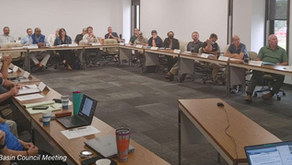Overcoming Crisis Caused by Rare Events
- JD Solomon
- Aug 18, 2020
- 2 min read
Updated: Nov 6, 2021

A crisis is the result of the unexpected. The unexpected is usually the result of an event with high consequences and a low frequency of occurrence.
Also known as rare events, overcome high-consequence, and low-likelihood events by having a plan for each of these seven categories:
Economic
Informational
Physical (key plants and facilities)
Human Resource
Reputational
Psychopathic Acts
Natural Disasters
It is more effective to have a plan to address an event in each category rather than being over-prepared in one category at the expense of the others. In other words, make sure to be prepared for a hurricane (Natural Disaster) and a cyber attack (Informational) rather than being prepared for a hurricane, flood, and earthquake (all are Natural Disasters) but having no plan for an event in the Informational category.
Rare events should be distinguished from normally occurring risks primarily by their frequency (high likelihood of occurrence during the period of interest). In project management, normally occurring risk examples include subcontractor delays, fabrications delays, rain days, and other similar events that occur regularly enough to be expected.
If the line between a rare event and a normal event is frequency, then the line is often blurred by consequences. A hurricane is almost universally considered a rare event, except on the US Gulf Coast where Category 1 hurricanes are almost annual events and produce limited damage. On the US Gulf Coast, a Category 3 (and its impacts) are the tipping point for classification as a rare event.
That brings us to the reality that all risk is personal. What trips one person into crisis mode is different than what trips another. That is the subject of another discussion. However, overcoming crisis starts with identifying and developing plans for rare (high-consequence, low-likelihood) events. Be prepared for at least one event in each of the seven categories of rare events.




Comments